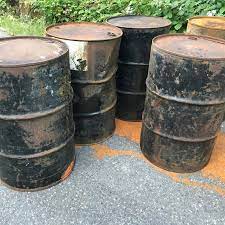Skip to content
Q: Are empty totes and drums that had oil but are now empty and awaiting pickup to be returned or recycled still considered for SPCC? In other words, do they still need to be included in the Plan, meet secondary containment requirements, and be inspected?
The Spill Prevention Control & Countermeasures (SPCC) regulations establish oil discharge prevention procedures, methods, and equipment requirements for non-transportation-related facilities with an aboveground oil storage capacity greater than 1,320 gallons (gal) or a buried underground oil storage capacity greater than 42,000 gal. Note that the gallon threshold requirement relates to the total capacity of the storage vessels (e.g., tanks, totes, drums) rather than the actual quantity of oil in the storage vessels at any given time. So, in terms of the aboveground storage threshold, an empty 55-gal drum is as relevant to the 1,320-gal threshold as a full or partially full 55-gal drum. Both an empty and a full drum are regulated by the SPCC rule, with the idea being that the empty drum has the capacity to be full and may be full, or partially full, at some future point. However, while the SPCC rules apply to “any container that is used for standby storage, for seasonal storage, or for temporary storage” they do not apply to a container that is “permanently closed” (40 CFR 112.1(b)(3)). A “permanently closed” container as defined in the SPCC rules at 40 CFR 112.2 means any container for which: 
-
All liquid and sludge have been removed from each container and connecting line; and
-
All connecting lines and piping have been disconnected from the container and blanked off, all valves (except for ventilation valves) have been closed and locked, and conspicuous signs have been posted on each container stating that it is a permanently closed container and noting the date of closure.
If the containers that you describe awaiting pickup from the facility meet the “permanently closed” definition, they would be exempt from the SPCC requirements of inclusion in the facility’s SPCC Plan, secondary containment, and inspection requirements.
For more information or assistance with your Environmental and Health & Safety regulatory compliance needs, contact Ralph Carito at Total Environmental & Safety, LLC (Total) at rcarito@TotalEnviron.com or 908-442-8599.
Thank you for your continued support. If you like what you read in Total’s Monthly EHS Newsletter, please tell your friends and colleagues.
We always appreciate hearing from you, so if you have a suggestion, comment or gripe, please drop us a line at: contact@TotalEnviron.com or call us at 908-442-8599.
Total Environmental & Safety’s (Total’s) most recent blog. Let us know if you enjoyed it.
Page load link



